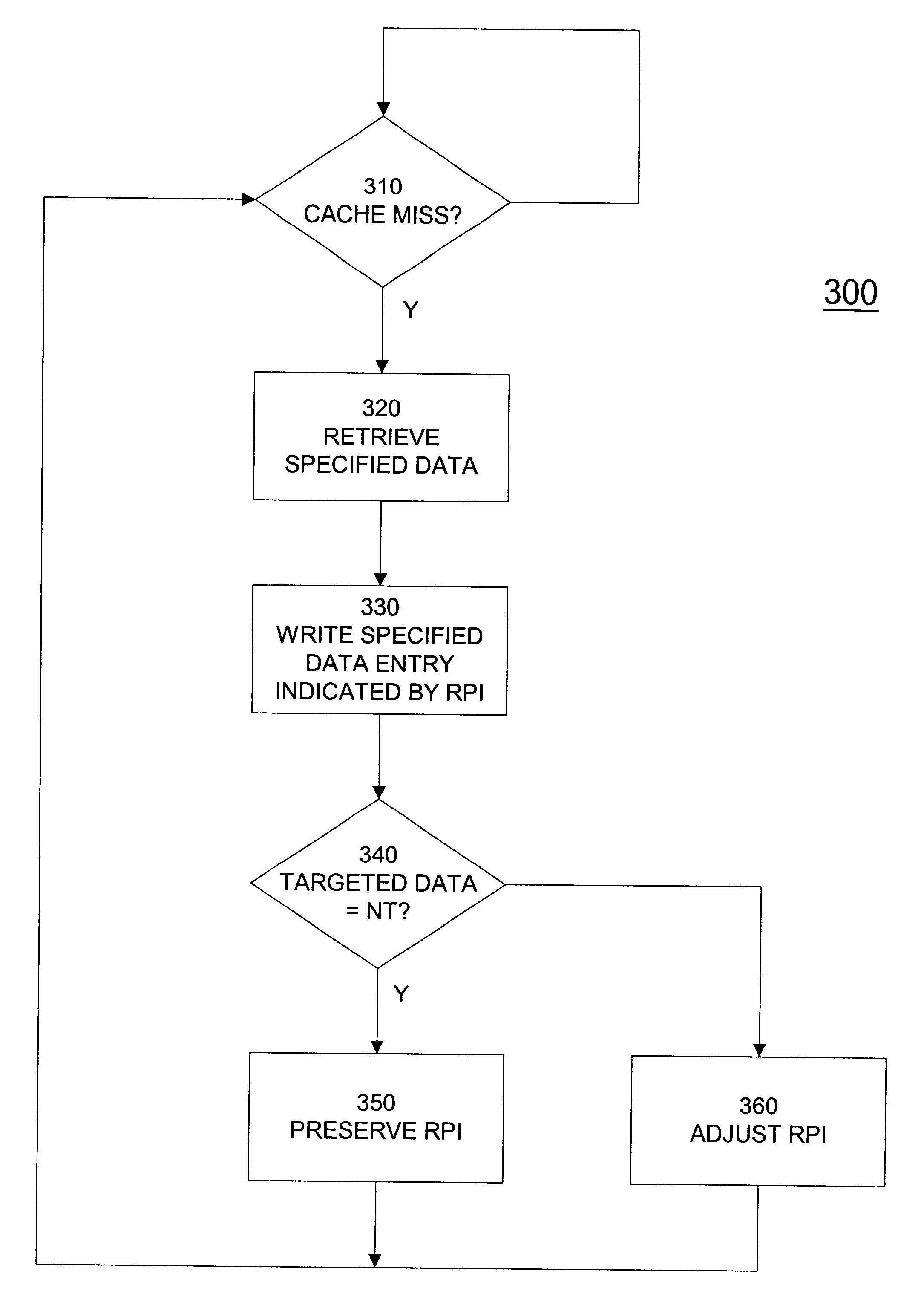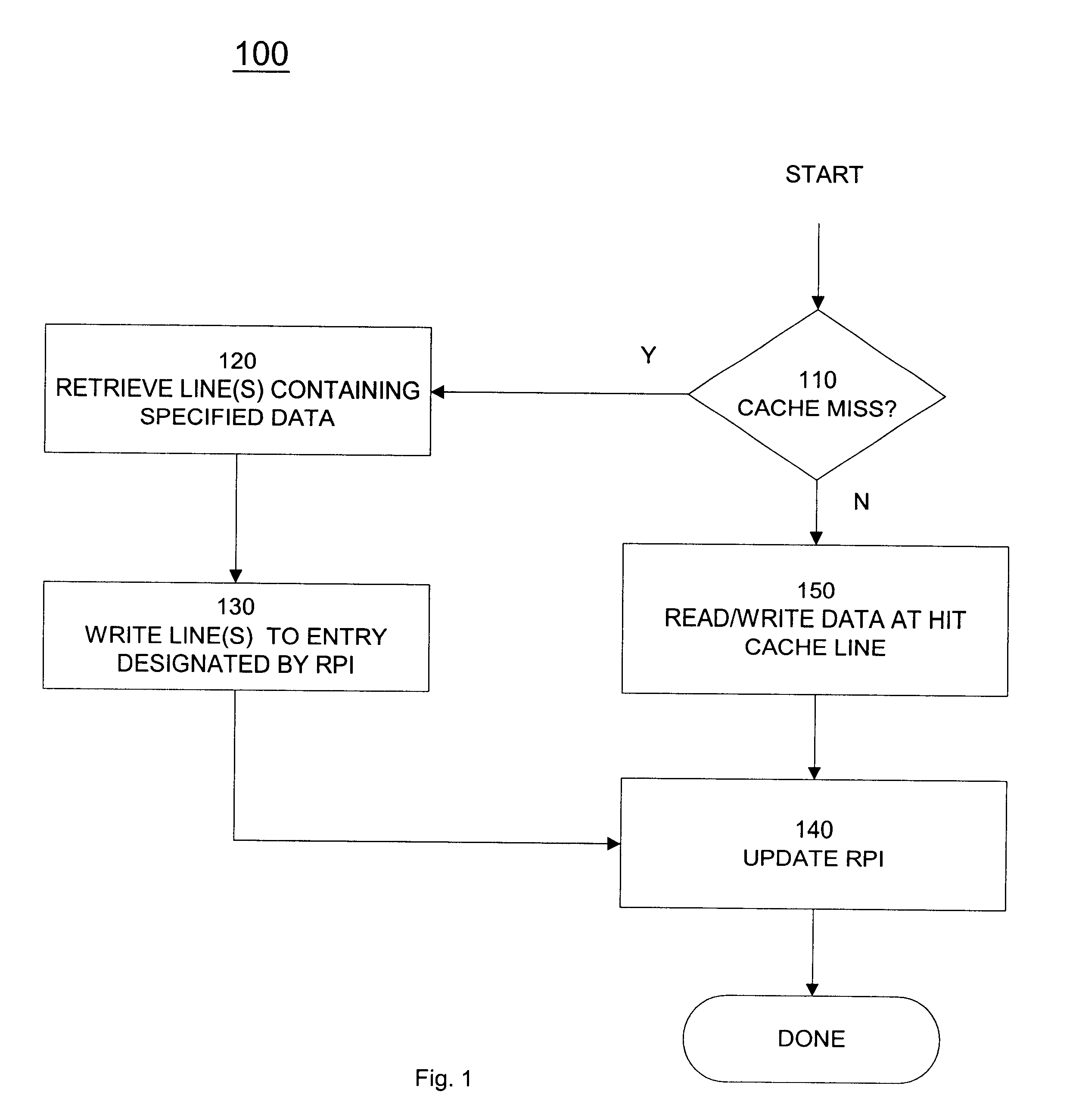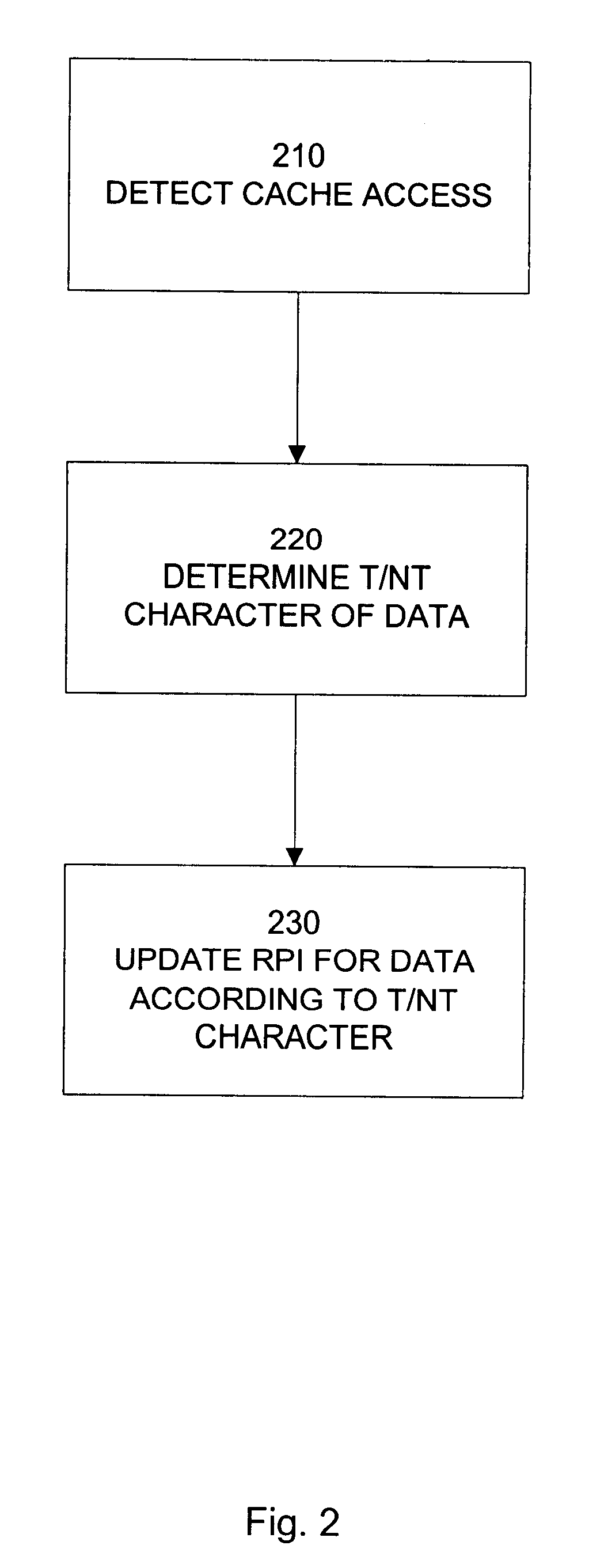Method and apparatus for managing temporal and non-temporal data in a single cache structure
a technology of temporal and non-temporal data and cache structure, applied in the field of systems and methods for caching data, can solve the problems of reducing the size of "on-chip" caches, e.g. l0 and l1, to reduce the impact of processor die area, use of separate storage structure, and reducing cache performan
- Summary
- Abstract
- Description
- Claims
- Application Information
AI Technical Summary
Problems solved by technology
Method used
Image
Examples
Embodiment Construction
The following discussion sets forth numerous specific details to provide a thorough understanding of the invention. However, those of ordinary skill in the art, having the benefit of this disclosure, will appreciate that the invention may be practiced without these specific details. In addition, various well known methods, procedures, components, and circuits have not been described in detail in order to focus attention on the features of the present invention.
The advantages of the present invention may be better appreciated with reference to conventional cache management systems. These systems are described, for example, in A. J. Smith, "Cache Memories," ACM Computing Surv. 14, No. 3, 473-530 (September 1982). Cache management systems attempt to identify data for storage in the cache hierarchy through various priority-based replacement policies. These policies include least-recently-used (LRU), pseudo LRU, least-frequently-used (LFU), not-recently-used (NRU), and other replacement ...
PUM
 Login to View More
Login to View More Abstract
Description
Claims
Application Information
 Login to View More
Login to View More - R&D
- Intellectual Property
- Life Sciences
- Materials
- Tech Scout
- Unparalleled Data Quality
- Higher Quality Content
- 60% Fewer Hallucinations
Browse by: Latest US Patents, China's latest patents, Technical Efficacy Thesaurus, Application Domain, Technology Topic, Popular Technical Reports.
© 2025 PatSnap. All rights reserved.Legal|Privacy policy|Modern Slavery Act Transparency Statement|Sitemap|About US| Contact US: help@patsnap.com



